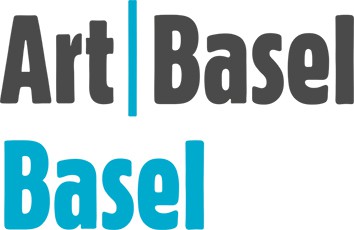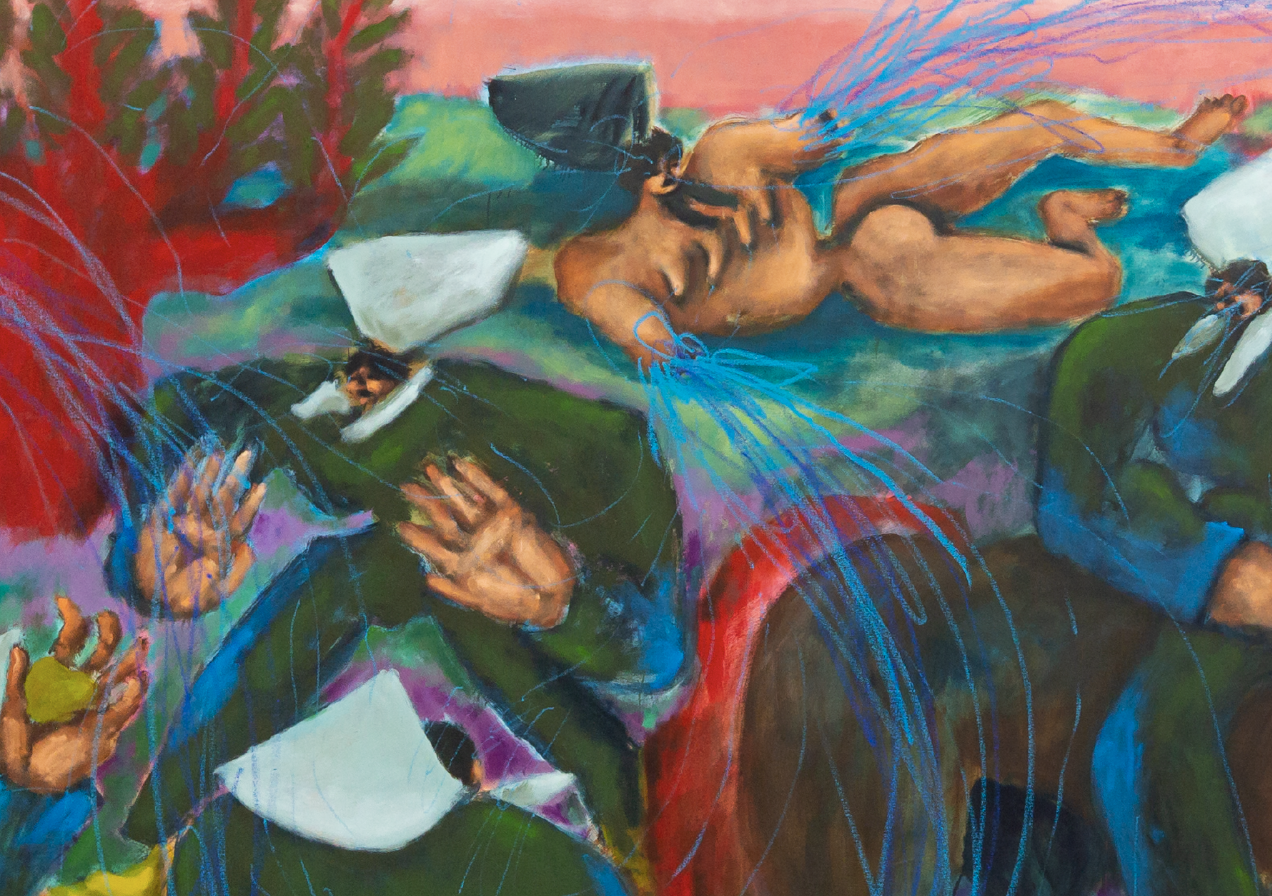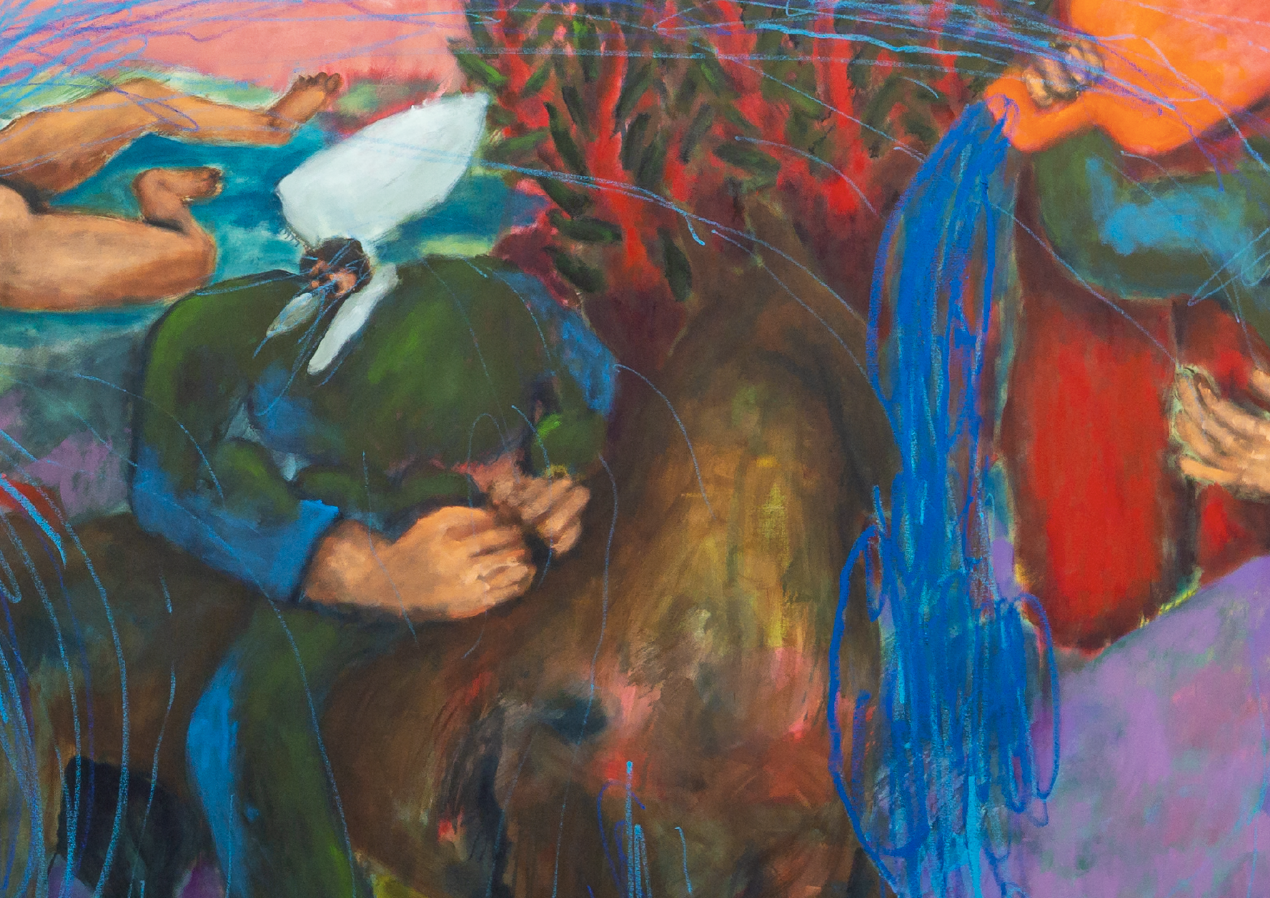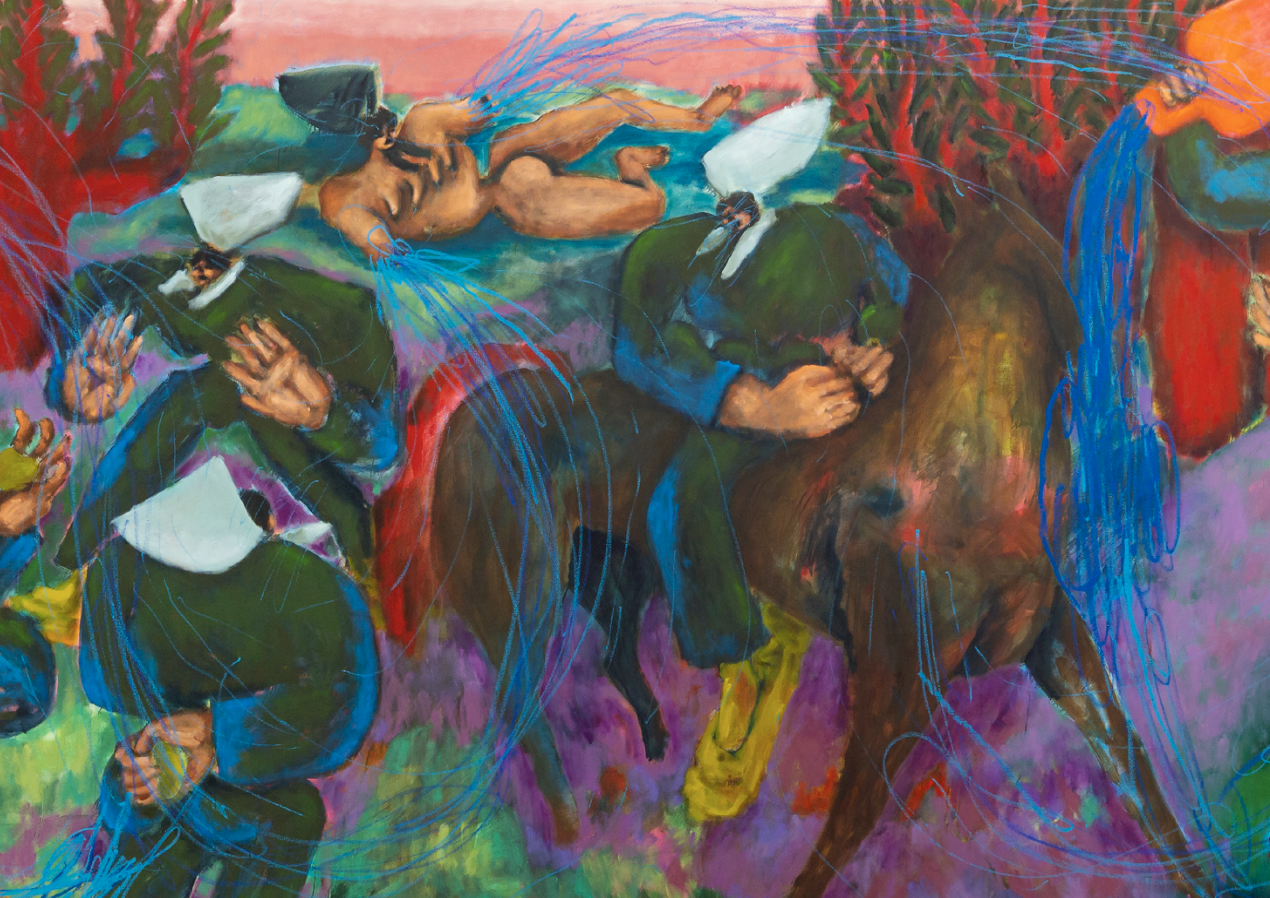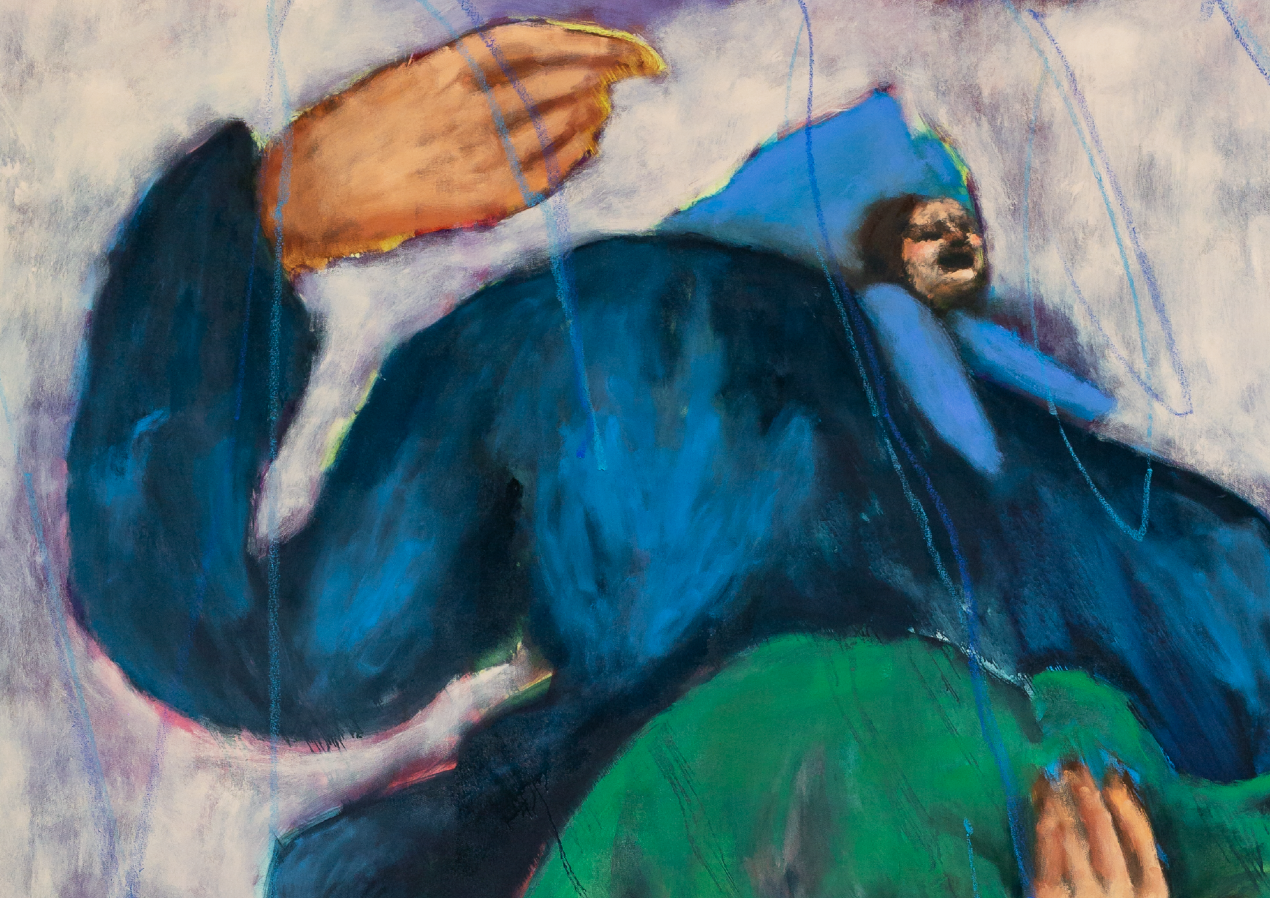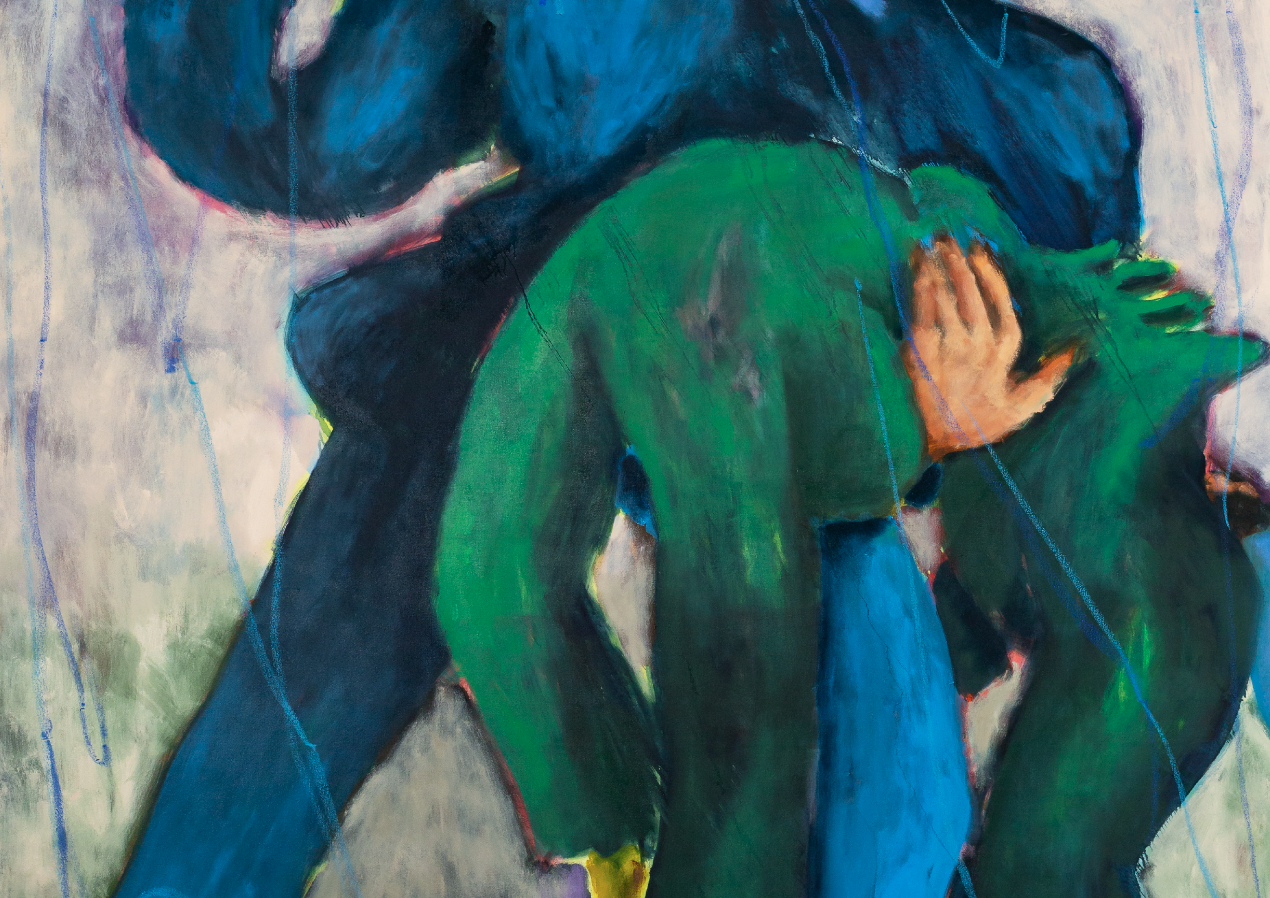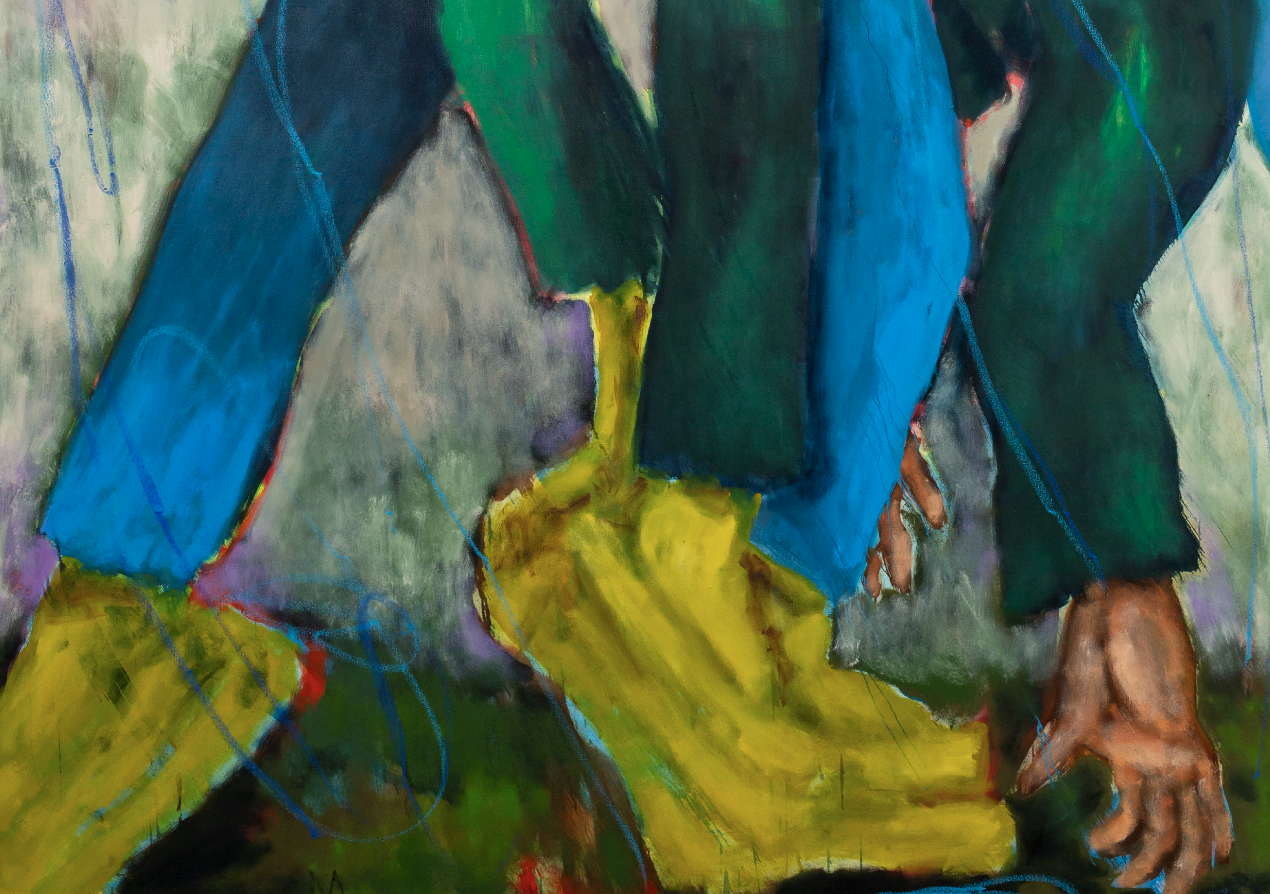Conny Maier
Art Basel Unlimited 2023 Conny Maier
June 15 – 18, 2023
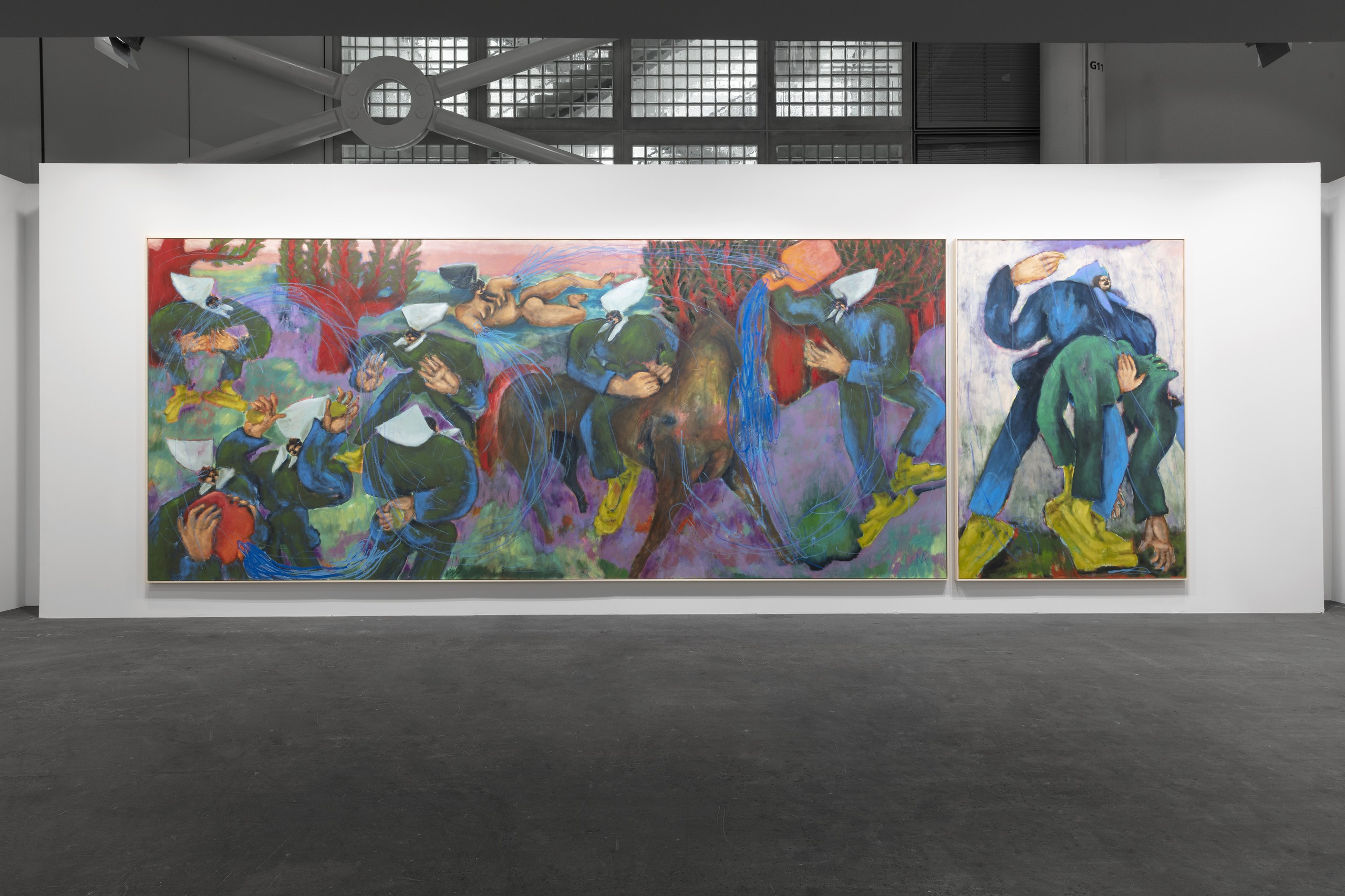
Installation view, Art Basel Unlimited 2023, curated by Giovanni Carmine
Conny Maier
The Source, 2023
Oil, oil stick, pigments on canvas
Panel 1: (300 × 700 cm // 118 × 275 1/2 in)
Panel 2: (300 × 200 cm // 118 × 78 1/2 in)
“Precarity is the condition of being vulnerable to others. Unpredictable encounters transform us; we are not in control, even of ourselves. Unable to rely on a stable structure of community, we are thrown into shifting assemblages, which remake us as well as our others.” – Anna Lowenhaupt Tsing
A four-breasted figure reclines in a clearing of vivid red trees. Her small face remains impassive as her truncated arms release great sprays of water, which are rendered as looping, expressive blue scrawls connecting the scene’s inhabitants in a dynamic state of reciprocal flow. Entitled The Source, German painter Conny Maier’s sprawling nine-meter long diptych speaks “of the expulsion from paradise, of the loss of a primordial state, of a great, barely endurable malaise in the prevailing culture.”
Conny Maier’s work explores fundamental questions about human nature, ecology, dominance, and control. Her painterly reflections on polarities like power and submission, equilibrium and instability, the human and the non-human take an unflinching look at the final throes of the Anthropocene and ask what a new future might hold. A sense of wildness and intensity pervades The Source. Stiff white kerchiefs pointed every which direction, the figures here seem to scan, squander, supplicate, and survey. With names like the sick, the angry, the defender, der reiter [the rider]/dominator, der vorsorger [the provider], der gefährliche [the dangerous], and der verschwender [the squanderer], the multifarious motivations of these characters suggest an infinite loop of struggle and renewal. The figures depicted in Maier‘s paintings seem to perpetually navigate the highs and lows of extreme sentiments. Kristian Vistrup Madsen notes that the contorted and broad chested people that populate [them] recall “as Baselitz’s before them, the gut-wrenching trauma of Francisco Goya’s Third of May 1808 […] They show not what people look like, but how they feel.” Maier regularly uses motifs like accidents or brawls as a means to channel her characters’ aggression and instability into a form of transformation or possibility. The indeterminate gestures these characters perform are indicative of the sense of ambivalence and possibility inherent in the artist‘s images. “Ambivalence is crucial to the human species, for the human animal,“ she once explained in an interview, “We show an incredible amount of solidarity, yet we also kill each other because of our beliefs. I would say that it‘s almost the foundation of human nature.“ The Source delves into this ambiguity and ambivalence head on. A smaller panel, the second part of the diptych, depicts two figures: a hulking person carries a prone figure in their arms, one of which is raised as if to gesture for help. In contrast to the larger panel, this archetypal gesture imbues the composition with a sense of tenderness and fellowship. Although not made explicitly clear, the limp four-breasted figure resembles a clothed version of the so-called “Source” in the diptych’s larger panel, albeit with arms, making this gesture of benevolence appear all the more urgent.
A source is literally a point of origin for a stream of water, but the term also refers to a kind of generative force: a cause, a point of origin, an initiator. All of the term’s different meanings permeate the work, whose ambivalence is heightened because the characters’ relationships to one another remain unclear. There is a peculiar timelessness to Maier’s paintings and the scenes that she depicts are almost impossible to place: they could just as easily exist in some not-so-distant past as a brave new world future. Their pastoral settings, archetypal scenes, and vibrant colors are unsettled by the misshapen figures who inhabit these landscapes—and threaten to tear this world asunder. And yet, their warped bodies can also be read as a testament to the perpetual struggle of finding balance in a constantly changing world.
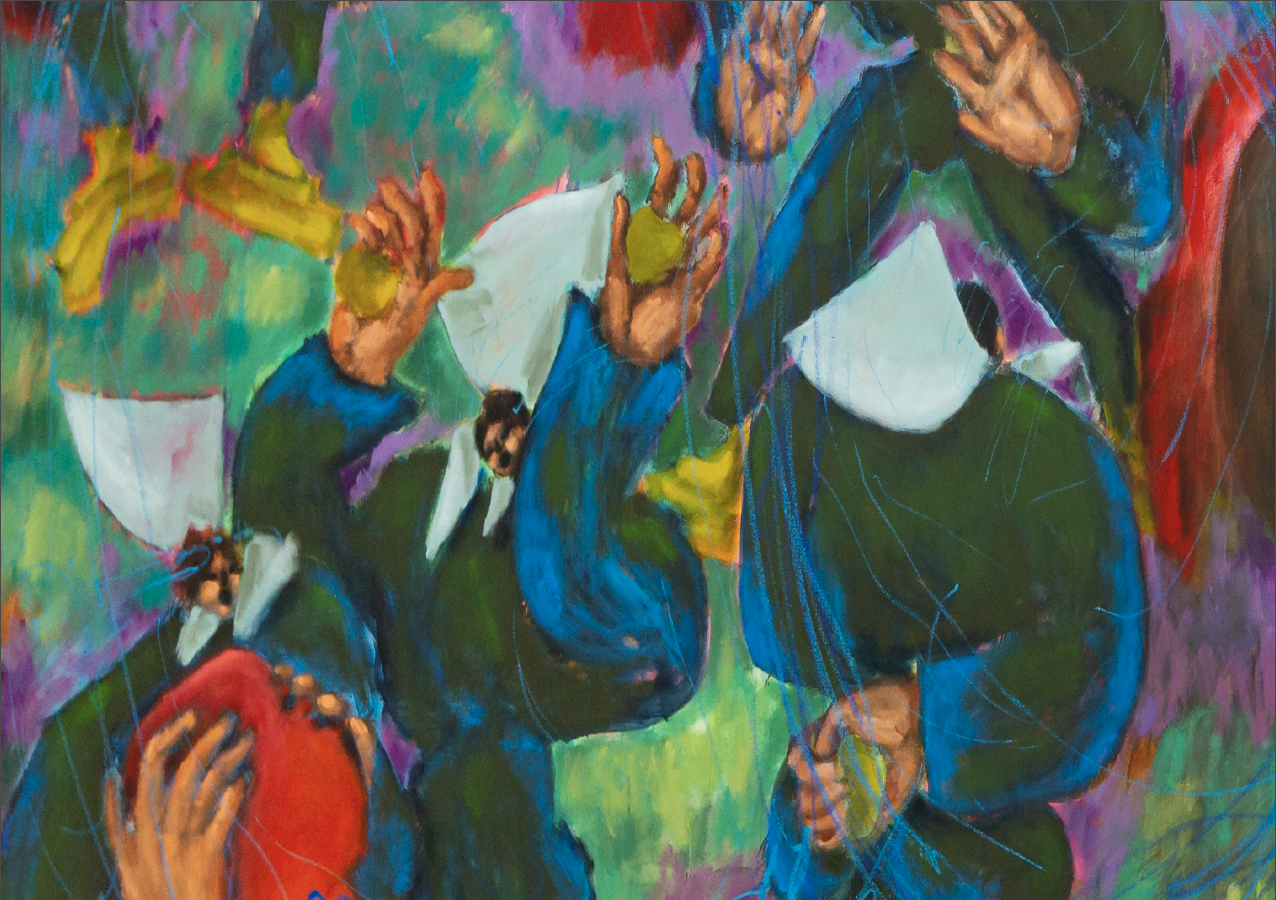
Detail view, Conny Maier
The Source, 2023
Oil, oil stick, pigments on canvas
Panel 1: (300 × 700 cm // 118 × 275 1/2 in)
Panel 2: (300 × 200 cm // 118 × 78 1/2 in)
German artist Conny Maier explores fundamental questions about human nature, ecology, dominance, and control. The off-kilter figuration in Maier’s paintings, coupled with the inter-species entanglements that her work depicts, articulate precarity and vulnerability as elemental states of being. Her painterly reflections on polarities like dominance and submission, equilibrium and instability, the human and the non-human take an unflinching look at the final throes of the Anthropocene, asking not only what should come to an end but what kind of new day might dawn.
Conny Maier was selected as one of the three recipients of Deutsche Bank’s prestigious Artists of the Year Prize in 2020. Her work has been exhibited recently in solo and group exhibitions at venues including de 11 Lijnen, Oudenburg; Palais Populaire, Berlin, MUDEC, Milan. Upcoming shows include Langen Foundation, Neuss; THE KING IS DEAD, LONG LIVE THE QUEEN., curated by Udo Kittelman at Museum Frieder Burda, Baden Baden. She lives and works in Berlin and Baleal, Portugal.
